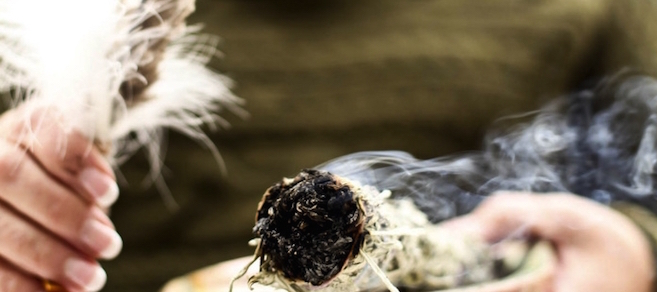The practice of smudging dates back to prehistoric times, and is very much in use today worldwide for cleaning everything from dwellings to human spirits. However, recent research has shed light on the popularity of this activity, revealing that burning certain plant matter actually clears harmful bacteria. All Western use of burning herbs and plants for spiritual purposes aside, the activity rests firmly in the sensibilities of ancient cultures in that, historically, smudging was believed to put forth the spirits of various “allies” to provide ease and balance to an individual or group.

In this way, the practice was used to clear spiritual and emotional negativity that has built up in a body or a space. Of course, there are skeptics who belittled the practice as unscientific and akin to magic. The practice has a negative association to a form of cultural imperialism, where traditions of dwindling indigenous populations are co-opted by the descendants of those who more or less conquered them. The scientific paper entitled “Medicinal Smokes” and published in the Journal of Ethnopharmacology focuses a scientific lens on the practice, which is becoming more and more widely practiced, despite skepticism. It serves to play against the role that this activity has played in a culturally diverse range of religions and tribal beliefs.
The research study looked into her verbal and non-herbal remedies that were administered by the burning of various matter. The research included information from 50 countries over 5 continents and found that, predominantly, smoke administered medicinally is mostly used to aid lung, brain and skin function. In addition, it was revealed that passive fumes doubled as a sort of air purifier. The purpose of this study was to see whether or not these medicinal smoke deliveries could be explored by Western medicine, because “The advantages of smoke-based remedies are rapid delivery to the brain, more efficient absorption by the body and lower cost of production.”
A follow-up paper published in the same periodical, “Medicinal smoke reduces airborne bacteria,” found that the research concluded that, in addition to health benefits, smudging was a powerful antiseptic: “We have observed that one hour treatment of medicinal smoke emanated by burning wood and a mixture of odoriferous and medicinal herbs on aerial bacterial population caused over 94% reduction of bacterial counts by 60 minutes and the ability of the smoke to purify or disinfect the air and to make the environment cleaner was maintained up to 24 hours in the closed room. we have demonstrated that using medicinal smoke it is possible to completely eliminate diverse plant in human pathogenic bacteria of the air within confined spaces.”
In short, burning medicinal herbs cleared airborne bacteria populations by 94%, and the space was still found to be disinfected a day later. What’s more, a month after smudging, much of the pathogens originally found were still undetectable. This has profound implications, as modern air quality in the developed and undeveloped world is atrocious, containing up to 1800 bacterial types, many of them pathogenic. With an increasing deadly array of antibacterial resistant strains, will need all the help we can get. ~Spirit Science
